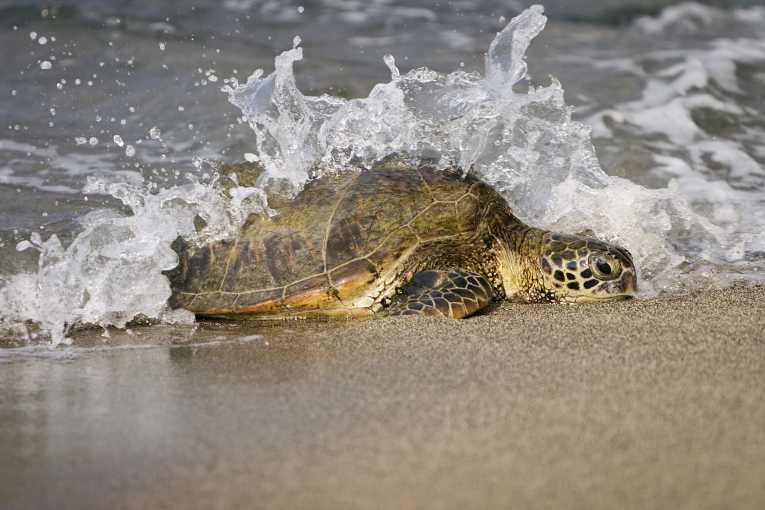Geomagnetic cues help young loggerhead turtles navigate the open ocean during their epic 8,000 mile journey between leaving their natal beaches in Florida, and returning 5-10 years later to breed. Researchers have just worked out how they do it.
'One of the great mysteries of animal behaviour is how any migratory animal can find their way in the vast expanses of featureless ocean,' said biologist Kenneth Lohmann at the University of North Carolina who has been studying navigation in turtles for many years. He worked with graduate student Nathan Putman to uncover the mystery. 'The most difficult part of open-sea navigation is determining longitude or east-west position. It took human navigators centuries to determine longitude on their long-distance voyages,' explained Putman, lead author of the study. 'This study shows for the first time, how an animal does this.'
The researchers exposed new hatchlings to magnetic signatures that replicated those at different points in their migration at either side of the Atlantic, at the same latitude but different longitudes, by creating artificial magnetic fields in a large circular tank and monitoring which way the turtles swam. The baby turtles were equipped with nylon bathing suits and tethered to a tracking arm which indicated the average heading of the swimming reptile for the short experiment, before they were released into the sea to begin their migration.
The loggerhead's secret is to use both the angle, or inclination; and the strength of the earth's magnetic field to deliver enough information to determine its exact position on the planet – both east-west and north-south. When the field in the tank duplicated that found near Puerto Rico, the turtles swam north east towards Florida, but when the tank gave the hatchlings geomagnetic cues that they were near the Cape Verde islands off Africa the creatures swam to the south west. Since the young turtles had never been in water before the results suggest that the reptiles are born with an inherited magnetic map.
'This is the first study to show how the turtles can derive positional information from magnetic cues to give both a latitude and longitude,' said Putman. 'Understanding the sensory cues that turtles rely on in their migrations is an important part of safeguarding their environment,' added Lohmann.










